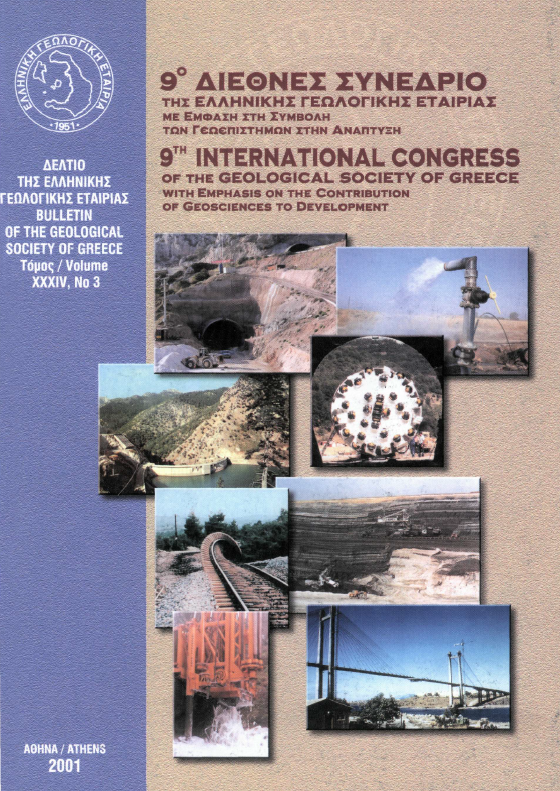Evaluation of an Upper Cretaceous limestone from the area of Arta for lime production

Abstract
Calcination of an Upper Cretaceous limestone from the Ionian Unit at 700-1100°C for 1-4 hours yielded very reactive lime end products. Lime formation was monitored by means of kinetic curves and TTT diagrams. Particle size seems to control the onset of lime crystallization at low temperatures, but is of minor importance at higher temperatures. With the experimental setting used, lime formation was completed at 900 °C. The specific surface area of the end products increases with firing temperature up to 800 °C, decreasing thereafter. Decrepitation of lime increases gradually with firing temperature. Hydration temperature during slaking increases rapidly up to 900 °C being relatively constant thereafter. Sintering and production of fines during firing control the physical properties of lime.
Article Details
- How to Cite
-
CHRISTIDIS, G., TRIANTAFYLLOU, G., & MARKOPOULOS, T. (2001). Evaluation of an Upper Cretaceous limestone from the area of Arta for lime production. Bulletin of the Geological Society of Greece, 34(3), 1169–1175. https://doi.org/10.12681/bgsg.17178
- Section
- Industrial Minerals and Rocks

This work is licensed under a Creative Commons Attribution-NonCommercial 4.0 International License.
Authors who publish with this journal agree to the following terms:
Authors retain copyright and grant the journal right of first publication with the work simultaneously licensed under a Creative Commons Attribution Non-Commercial License that allows others to share the work with an acknowledgement of the work's authorship and initial publication in this journal.
Authors are able to enter into separate, additional contractual arrangements for the non-exclusive distribution of the journal's published version of the work (e.g. post it to an institutional repository or publish it in a book), with an acknowledgement of its initial publication in this journal. Authors are permitted and encouraged to post their work online (preferably in institutional repositories or on their website) prior to and during the submission process, as it can lead to productive exchanges, as well as earlier and greater citation of published work.






